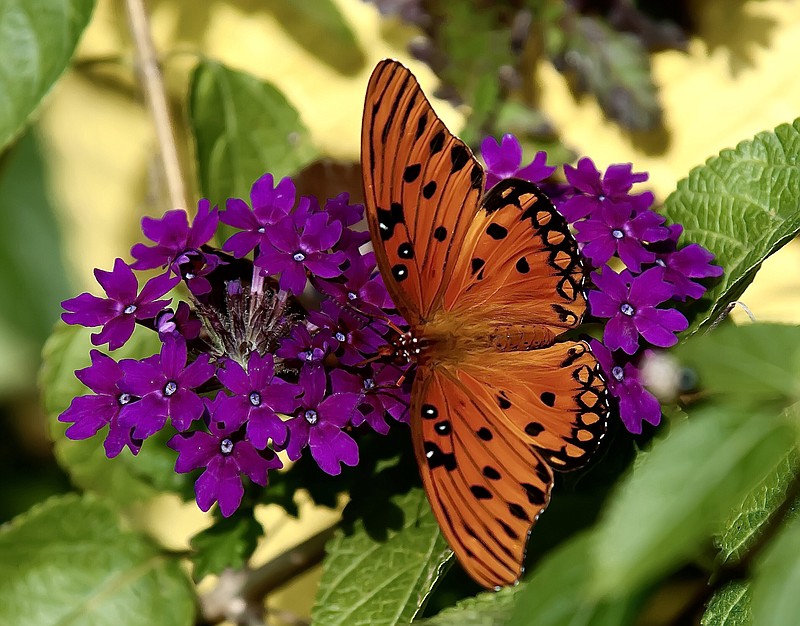As I was watching a fresh newborn Gulf fritillary swooping down to feed on Superbena Royale Plum Wine verbenas, I started thinking that I wish everyone knew about these flowers that our grandparents grew and certainly laced with native DNA.
Some of the first flowers I came to know as a child were verbenas in my grandparents' yard in Merkel, Texas. Red and white verbenas were growing in street lined beds that no doubt played a role in their Yard of the Month designations back in the 1950s.
Thankfully the National Garden Bureau is helping remind everyone about these stalwart flowers as they have designated 2022 as "The Year of the verbena." My first verbena blossoms of 2021 appeared in February and now I find it incredible that I am getting flushes of Superbena Royale Plum Wine and Superbena Whiteout. Next year's new Superbena Imperial Blue verbena and Superbena Stormburst are putting on an explosion of growth.
I used to laugh at one of my favorite garden center's signs that said annuals were this price, perennials this, but eternals were in the hundreds of dollars. I would never be guilty of saying Superbenas are eternals, but having blooms for 10 months is indeed special.
Proven Winners definitely call them annuals with regard to marketing, but most of us in the South consider today's verbena hybrid to be a short-lived perennial. I am in year three with Superbena Whiteout and Superbena Stormburst, both of which have enormous flowers.
Superbena plants are vigorous, 12-inches tall with a spread of 30-inches, and were made to bloom. In addition to 11-Superbenas, you find 5-selections under the Superbena Royale collection that are just a little more compact, spreading only 24 inches.
To find the most success select a site in full sun with well-drained soil. Wet, winter, soggy soil is the enemy that can prevent a spring return. Plant nursery grown transplants this spring at the same depth they are growing in the container, spacing 12 to 18 inches apart.
After growing verbenas in university trials, we learned one really important aspect of verbena growing, and that is to cut back to keep the growth in a regenerative state. New runners means new flowers. Should they look tired or stop growing, cut back. Should those dastardly spider mites flare on you, just cut those little buggers out, and start new growth.
Water to get established, but then sparingly, as dictated by the weather.
The verbena responds to feeding every four to six weeks with a light application of a slow-release fertilizer, which is very important to time or coordinate with the cutting back process I mentioned.
As you celebrate the year of the verbena in 2022 by planting several, you no doubt will experience the best butterfly, hummingbird and pollinator season that you have ever had. This will be a learning moment for your children and grandchildren like it was for me back in the '50s.
(Norman Winter, horticulturist, garden speaker and author of "Tough-as-Nails Flowers for the South" and "Captivating Combinations: Color and Style in the Garden." Follow him on Facebook @NormanWinterTheGardenGuy.)

